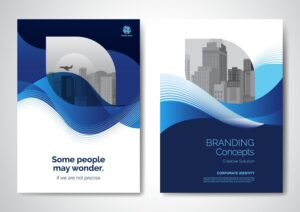Introduction
When it comes to branding and design, typography plays a major role in shaping how audiences perceive your business. One of the most common debates in design is serif vs sans-serif fonts. Both have unique qualities, and the right choice depends on your brand’s personality, audience, and goals. In this blog, we’ll explore the difference between serif and sans-serif fonts, their benefits, and how to decide which typeface suits your brand.
What Are Serif Fonts?
Serif fonts are typefaces that include small decorative strokes or “feet” at the ends of letters. These fonts are often seen as traditional, formal, and elegant. They are widely used in newspapers, books, and official documents. Examples of serif fonts include Times New Roman, Georgia, and Garamond.
Benefits of Serif Fonts:
-
Great for long-form content like blogs, articles, and print.
-
Convey authority, trust, and professionalism.
-
A good choice for brands in finance, law, or education.
What Are Sans-Serif Fonts?
Unlike serif fonts, sans-serif fonts are clean and modern without decorative strokes. This makes them highly legible, especially in digital formats. Examples include Arial, Helvetica, and Open Sans.
Benefits of Sans-Serif Fonts:
-
Perfect for websites, apps, and digital interfaces.
-
Convey simplicity, modernity, and minimalism.
-
Ideal for tech companies, startups, and creative brands.

Serif vs Sans-Serif Fonts: Which Should You Choose?
The debate of serif vs sans-serif fonts is not about which is better—it’s about which aligns with your brand. If your business values tradition and reliability, serif fonts may be the right choice. If your brand emphasizes innovation and a forward-thinking approach, sans-serif fonts might be a better fit.
For example, a luxury law firm may prefer serif fonts to reflect sophistication, while a digital marketing agency may lean toward sans-serif for a fresh, modern appeal.
Combining Serif and Sans-Serif Fonts
A powerful design technique is pairing serif with sans-serif fonts. For instance, you can use a serif font for headings to create impact and a sans-serif font for body text for readability. This combination balances tradition and modernity, giving your brand a professional yet approachable look.
How Fonts Impact Branding
Typography is more than just aesthetics—it directly influences how people perceive your brand. Choosing between serif vs sans-serif fonts can shape the emotions your audience feels. According to design psychology, serif fonts instill trust and authority, while sans-serif fonts communicate clarity and innovation.
If you’re unsure about which style aligns with your brand identity, working with experts can help. You can connect with Digitor for personalized branding solutions.
Conclusion
The serif vs sans-serif fonts debate doesn’t have a one-size-fits-all answer. The best font choice depends on your brand voice, industry, and target audience. While serif fonts emphasize tradition and professionalism, sans-serif fonts highlight modernity and minimalism. For many brands, a balanced combination of both works best.
Typography is an essential part of branding, and your choice of fonts can make your business stand out. For deeper insights into typography and brand design, you can also explore resources like DesignIndia Magazine (external Indian source).
Explore more related articles to deepen your understanding
Best Fonts for Branding: Create a Lasting Visual Identity
SEO Content Writing: A Complete Guide for BeginnersDoes Google use Cloudflare
Content Writing Basics: A Beginner’s Guide to Effective Writing







